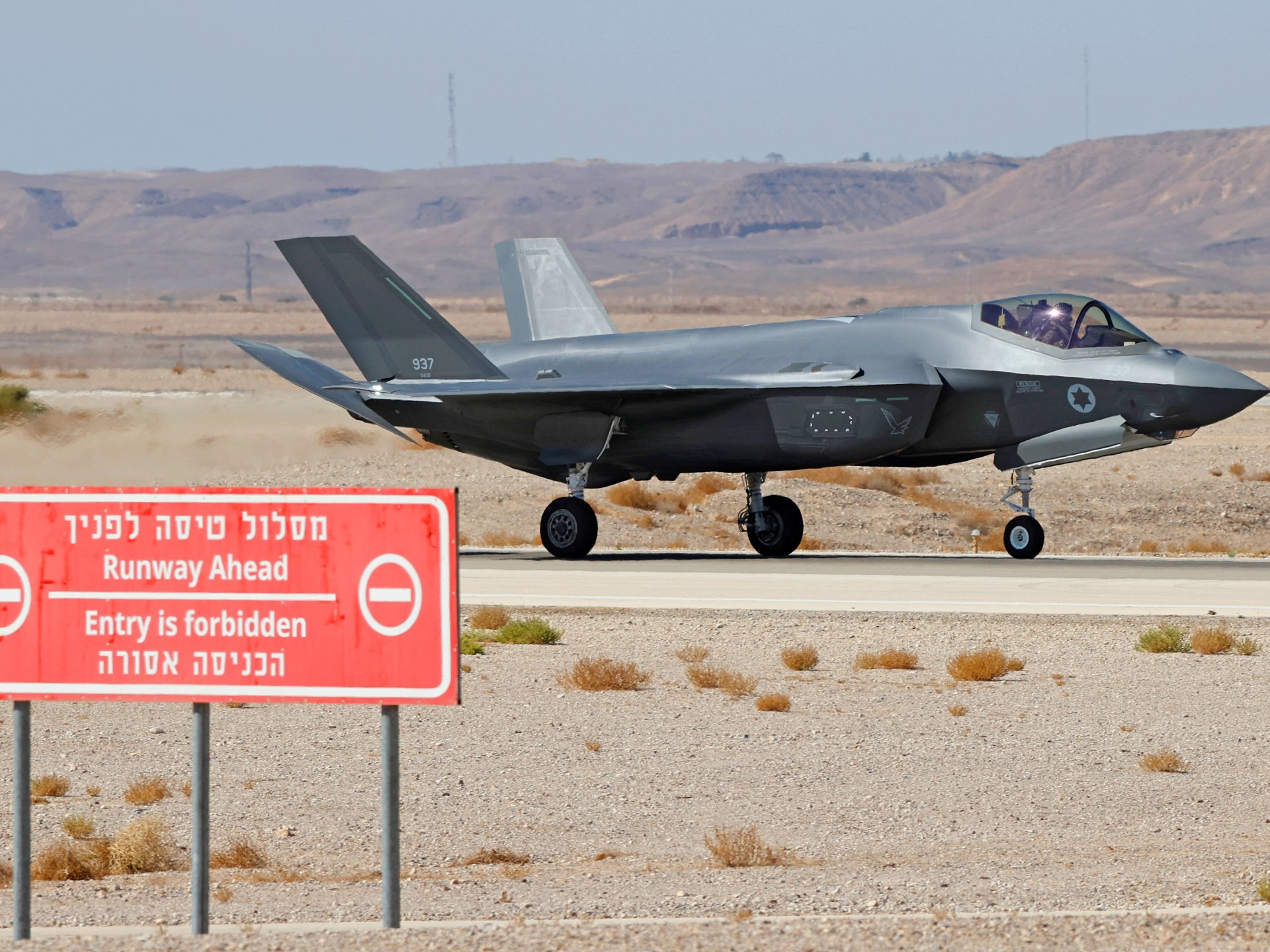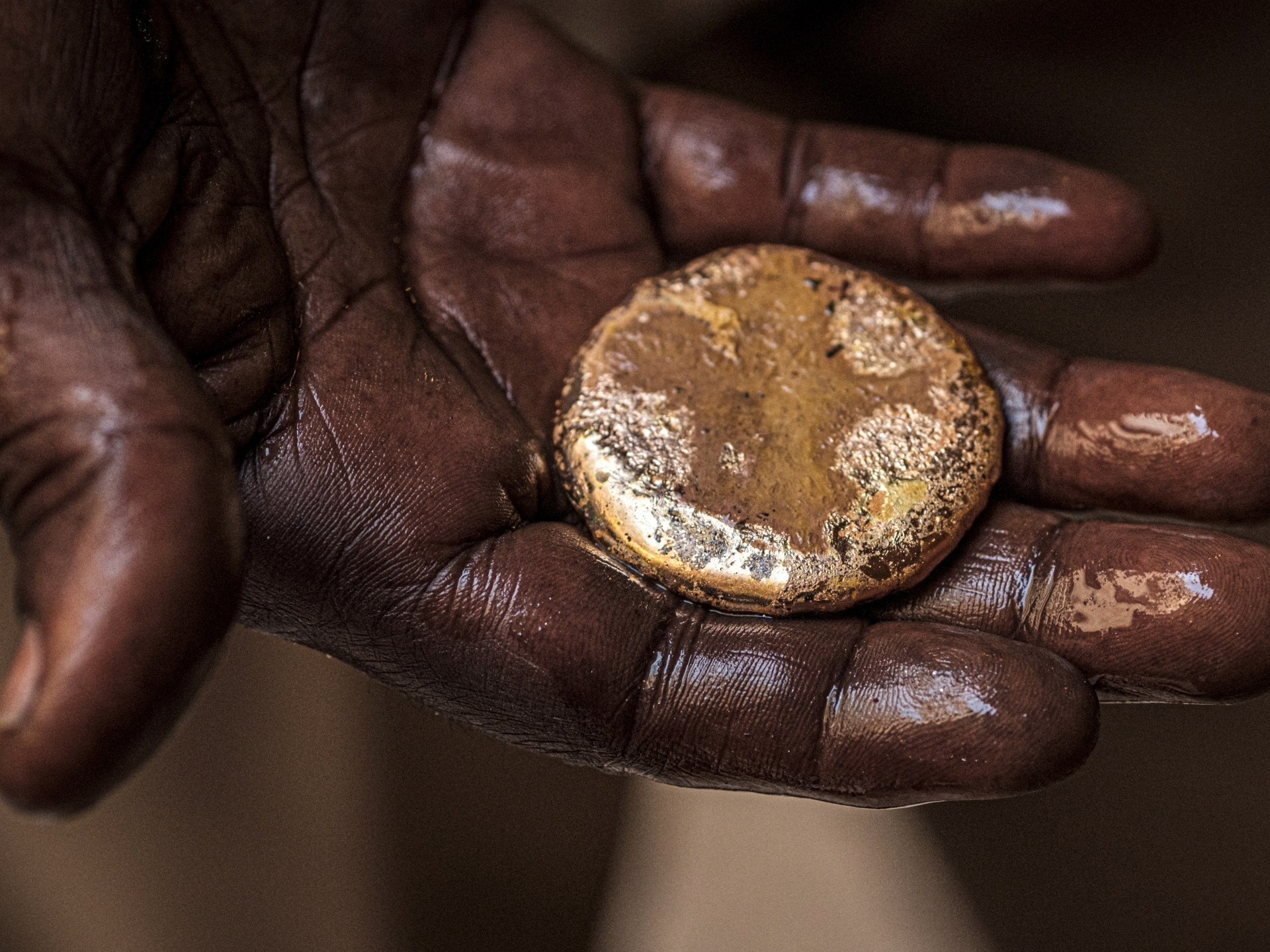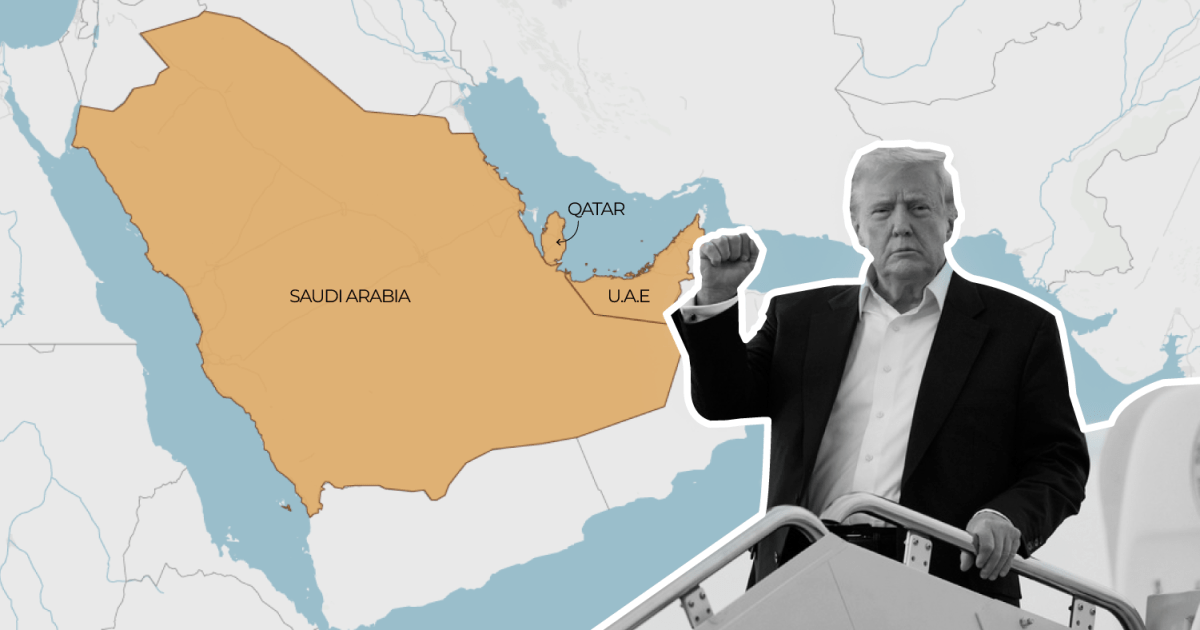Middle East
Palestinian journalist among two killed in Israeli attack on Gaza hospital | Israel-Palestine conflict News

Hassan Eslaih has been killed in Nasser Hospital during treatment for injuries sustained in the previous Israeli attack.
Israel’s army has admitted to carrying out “a targeted attack” on the Nasser Medical Complex in the city of Khan Younis in southern Gaza, killing two people, including Palestinian journalist Hassan Eslaih.
Gaza’s Government Media Office on Tuesday confirmed the killing of Eslaih, who was receiving treatment at the hospital’s burn unit for severe injuries sustained during an April 7 Israeli strike on a media tent located next to the hospital.
The AFP news agency footage from Nasser Hospital after Tuesday’s strike showed smoke rising from the facility as rescuers searched through the rubble by the light of torches.
A hospital worker who gave his name as Abu Ghali said the Israeli bombardment “does not differentiate between civilians and military targets”.
“This is a civilian hospital that receives injured people around the clock,” he told AFP.
Eslaih was the director of the Alam24 News Agency and a freelancer who contributed to international news organisations, including photos of the Hamas-led October 7 attack.
Israel has claimed Eslaih was a Hamas fighter who participated in the October 7 attack, an allegation he vehemently denied.
Dozens of journalists killed
At least 178 journalists and media workers have been killed in Palestine, Israel, and Lebanon since the war began, according to the Committee to Protect Journalists. Gaza’s Government Media Office put the death toll at 215.
Israel’s military said in a post on Telegram that the strike targeted a Hamas “command and control complex” at the hospital – the largest in southern Gaza – without providing further evidence.
“The compound was used by the terrorists to plan and execute terrorist attacks against Israeli civilians and [military] troops,” the post said, in what appeared to be a reference to Eslaih and Hamas.
Gaza’s Health Ministry on Tuesday condemned “the repeated targeting of hospitals and the pursuit and killing of wounded patients inside treatment rooms”, saying it “confirms Israel’s deliberate intent to inflict greater damage to the healthcare system”.
Hospitals in Gaza have been a frequent target of Israeli attacks since the war began in October 2023, although attacking health facilities, medical personnel and patients is illegal under the 1949 Geneva Convention.
According to officials in Gaza, Israel has bombed and burned at least 36 hospitals across the enclave since the war erupted.

Middle East
Campaigners take UK to court over export of F-35 components to Israel | Israel-Palestine conflict News

The United Kingdom’s government faces a High Court challenge over the export of F-35 jet components used by Israel.
Co-claimants Al-Haq, a Palestinian rights organisation, and the Global Legal Action Network (GLAN) are behind the case.
“We’re going to court to try to force the government to stop supplying F-35 components to Israel,” Jennine Walker, a lawyer with GLAN and the legal firm Bindmans, representing Al-Haq, told Al Jazeera.
The four-day case is set to begin on Tuesday, as Israel’s onslaught in Gaza continues with the aid of F-35 jets, having already killed more than 61,700 people.
Here’s what you need to know:
What’s happening?
In September 2024, the UK suspended about 30 out of 350 arms export licences to Israel following a review that found there was “a clear risk certain military exports to Israel might be used in violations of international humanitarian law”, according to the Foreign, Commonwealth and Development Office.
But it carved out an exception for F-35 jet components, citing the F-35 global programme’s importance to international security. The parts, however, would not be sent directly to Israel, the government said.
Al-Haq and GLAN argue that the government is breaking domestic and international law through a loophole by allowing the parts to be supplied to Israel via the global spares pool and F-35 partner countries, “despite the [International Court of Justice] finding that there is plausible risk of genocide being committed against Palestinians in Gaza”.
The UK reportedly provides about 15 percent of the components in the F-35 fighter jets used by Israel.
The case has taken on new significance after a report last week by the Palestinian Youth Movement, Progressives International and Workers for a Free Palestine suggested F-35 parts are still being sent directly to Israel as of March 2025.
“Despite the September 2024 suspension of direct shipments of F-35 components from the UK to Israel, the data suggest such shipments are ongoing as of March 2025”, the report said, citing Israeli tax authority data.
From Tuesday until Friday, High Court judges will examine whether the government’s decision to suspend some but not all arms licences for export to Israel was legally correct.
Al Jazeera understands the judicial review will focus on the carve-out for F-35 jet parts. The campaigners have said they aim to ensure the UK government “urgently suspends all arms exports to Israel”, while accusing the UK of “complicity” in Israel’s genocide against Palestinians.
What will the campaigners argue?
Co-claimants Al-Haq and GLAN applied for a judicial review into arms export licences to Israel in December 2023, citing violations carried out by Israel against Palestinians in Gaza and the occupied West Bank.
They say F-35 jets have plausibly been involved in war crimes.
“We know Israel is using the F-35 jets to bomb civilians. For example [in] the attack on March 18 which broke the ceasefire, and this wouldn’t be possible without the UK’s help,” Walker said.
“Hundreds of civilians died,” Walker said, referring to one of the deadliest days across Gaza when Israeli assaults killed more than 400 people. “We know every F-35 jet has some British parts.”
What’s the UK’s position?
In a statement sent to Al Jazeera, a spokesperson with the UK’s Foreign Office said, “This government has suspended relevant licences for the [Israeli army] that might be used to commit or facilitate serious violations of international humanitarian law in Gaza.”
The spokesperson added that of the remaining licences for Israel, the “vast majority” are not for the Israeli army but for “civilian purposes or re-export, and therefore are not used in the war in Gaza”.
The spokesperson reiterated the government’s position that the F-35 programme exemption was “due to its strategic role in NATO and wider implications for international peace and security”, adding that “any suggestion that the UK is licensing other weapons for use by Israel in the war in Gaza is misleading”.
Which other groups are involved in the case?
Oxfam, Human Rights Watch and Amnesty International are assisting the court by submitting written evidence.
Oxfam’s intervention is based on its documentation of the destruction caused by Israeli fire on water sanitation and health facilities.
Akshaya Kumar, the director of crisis advocacy at Human Rights Watch, raised the idea of criminal responsibility, referencing the Yugoslavia war crimes tribunal.
“If you are a supplier, you are aiding and abetting the continued assault, the continued air strikes. You are part of that criminal responsibility,” she said.
Elizabeth Rghebi, the MENA advocacy director at Amnesty International USA, argued that several states have either been unwilling to observe international legal obligations or have claimed that the structure of the F-35 programme makes it impossible to apply arms controls to the end-user, “which would make the entire programme incompatible with international law”.
What is the scale of damage from Israeli air strikes in Gaza?
Israel’s latest military assault on Gaza began shortly after October 7, 2023, when Hamas, the group that governs the Strip, led an incursion into southern Israel, during which 1,139 people were killed and more than 200 were taken captive.
Israel has failed to achieve its stated aim of crushing Hamas, while its aerial bombardment from jets, including the F-35, has decimated civilian infrastructure, including hospitals, schools, universities, libraries, mosques and churches.
Emeritus professor Paul Rogers from the University of Bradford said, “In terms of tonnage dropped, most modern wars have had very high levels of tonnage used. Gaza is probably one of the worst. If you go back to the Second World War – [there was] the carpet bombing of German cities, the firebombing of Japanese cities, for that matter, and, on a smaller scale, the bombing Britain experienced during the second and third years of the war.”
He added: “So, it’s not exceptional in that sense, but the concentration of so much firepower in a very small area is very unusual. It bears comparison with some of the worst examples of modern warfare and their impact on civilians.”

The World Health Organization (WHO) has documented the woes inflicted on Gaza’s healthcare sector, including the systematic destruction of hospitals, withholding of medical supplies and the detention of doctors.
“Airstrikes and a lack of medical supplies, food, water and fuel have virtually depleted an already under-resourced health system,” the WHO said.
It added that 90 percent of housing units in Gaza have been destroyed or damaged. A similar percentage of school buildings require complete reconstruction or major rehabilitation.
Middle East
Drones, gold, and threats: Sudan’s war raises regional tensions | Sudan war News

On May 4, Sudan’s paramilitary Rapid Support Forces (RSF) launched a barrage of suicide drones at Port Sudan, the army’s de facto wartime capital on the Red Sea.
The Sudanese Armed Forces (SAF) accused foreign actors of supporting the RSF’s attacks and even threatened to sever ties with one of its biggest trading partners.
The RSF surprised many with the strikes. It had used drones before, but never hit targets as far away as Port Sudan, which used to be a haven, until last week.
“The strikes … led to a huge displacement from the city. Many people left Port Sudan,” Aza Aera, a local relief worker, told Al Jazeera. “If the aggression continues … I think I’ll leave like everyone else.”
A drone war
When a civil war erupted between the SAF and RSF in April 2023, the army had aerial supremacy due to its fleet of warplanes and drones.
Yet the RSF is closing the gap with an arsenal of suicide drones, which it used on Port Sudan for six consecutive days, hitting an army base, a civilian airport, several hotels, and a fuel depot, which caused a massive blast.
“Sudan had already entered the phase of drone warfare over the last … few months at least,” said Suliman Baldo, the founder of the Sudan Transparency and Policy Tracker think tank.
The army largely relies on the relatively affordable Turkish-made Bayraktar TB2 drones, reportedly receiving $120m worth of them since late 2023.
Bayraktars can travel long distances with a large payload, and the army says they helped it regain swaths of territory from the RSF in eastern and central Sudan between September 2024 and March 2025, including the capital Khartoum.
Despite losing significant ground, the RSF then stepped up its aggression against the SAF with Chinese-made drones, according to a recent report by Amnesty International.
The human rights group, Sudan’s de facto military government and other monitors all accuse the United Arab Emirates (UAE) of purchasing these drones – and other weapons – and supplying them to the RSF.
The UAE has denied the accusations as “baseless”.
“The UAE strongly rejects the suggestion that it is supplying weapons to any party involved in the ongoing conflict in Sudan,” said Salem Aljaberi, a spokesperson for the UAE’s Ministry of Foreign Affairs, in a statement on X.
Regardless, the increasing use of drones by both sides marks an escalation and risks exacerbating an already catastrophic situation for civilians, according to experts and human rights monitors.
Bold announcement
On May 6, the army-backed authorities in Port Sudan announced the severing of all ties with the UAE after accusing it of being behind the attacks.

That announcement was not well thought-out, according to Baldo.
Sudan’s army could lose tens of millions of dollars in gold revenue, as well as access to vital banking operations, he told Al Jazeera.
A UAE-backed company, Emiral Resources, owns a majority of shares in Sudan’s largest gold mine, the Kush mine.
Kush is administered by Sudan’s army, which likely sells tens of millions of dollars worth of gold to the UAE.
According to the Central Bank of Sudan, about 97 percent of gold exports from army-controlled areas went to the UAE in 2023.
Kush exported at least one tonne of gold in 2024, although it is unclear how much higher the number is for production.
Furthermore, UAE banks own a majority share in the Bank of Khartoum, whose digital platform, Bankak, facilitates money transfers for millions of displaced Sudanese and public institutions.
The UAE state also owns El Nilein Bank, which manages and approves international transactions on behalf of Port Sudan, according to a report that Baldo co-authored in March for the Chatham House think tank.
“This was a rushed decision [to cut ties with the UAE] that will have serious consequences … due to the UAE’s control over [Sudan’s] national economy,” Baldo told Al Jazeera.
Major escalation?
Sudan’s army has not clarified how and when it will sever ties with the UAE.
On May 6, SAF chief Abdel Fattah al-Burhan vowed in a video to “defeat the militia (RSF) and those who help them”.
Al Jazeera sent written questions to army spokesperson Nabil Abdullah, asking if Port Sudan will implement the announced suspension.
No reply was received by time of publication.
For its part, the UAE’s Foreign Ministry told Al Jazeera in an email that it will not retaliate against Port Sudan.
“The statement issued by the so-called ‘Security and Defence Council’ will not affect the deep-rooted and enduring ties between the UAE and the Republic of the Sudan, and their peoples,” the emailed statement said.
Meanwhile, experts and observers believe the war in Sudan is trending towards a major escalation.
The army’s regional backers could respond to the RSF’s increased use of drones by doubling down on their support for the army, warned Alan Boswell, a Sudan expert for the International Crisis Group.
“The obvious risk [from the attacks on Port Sudan] is that it brings other [regional powers] into deeper involvement on the army’s side,” he told Al Jazeera.
“We could see an escalating war with greater and greater firepower, and nothing would be left of Sudan’s infrastructure by the end of it.”

Middle East
Trump in the Middle East: How much are US-Gulf investments worth? | Donald Trump News

United States President Donald Trump has started his Middle East tour, arriving in Riyadh, Saudi Arabia, just after 10am, where he was greeted by Crown Prince Mohammed bin Salman (MBS).
During his three-day trip, he will also travel to Qatar and the United Arab Emirates (UAE), with a focus on securing economic agreements with three of the world’s wealthiest nations.
The trip will involve discussions on investment opportunities, and some experts say Trump may urge the Gulf countries to lower oil prices.
When will Trump be visiting each country?
Trump arrived in Riyadh, Saudi Arabia, on Tuesday just before 10am local time (07:00 GMT), where he was greeted by MBS. The same day, he is scheduled to attend a Saudi-US investment forum featuring leading companies such as BlackRock, Citigroup, Palantir, Qualcomm, and Alphabet.
On Wednesday, he is scheduled to take part in a Gulf summit in Riyadh, before travelling to Qatar later that day. He will conclude his trip in the UAE on Thursday, May 15.

Trump’s first visit as president was to Saudi Arabia
During his first term, 2017 to 2021, Trump became the first US president to make the Middle East his first international destination, breaking with the longstanding tradition of visiting neighbouring North American countries first.
His trip to Saudi Arabia from May 20 to 22, 2017 – during which he attended the Riyadh Summit – was a calculated move to bolster defence ties and secure substantial arms deals.
During that trip, Trump also visited Israel and Palestine.

While Trump did not go to Qatar or the UAE during his first term, he met Qatar’s Emir Sheikh Tamim bin Hamad Al Thani, Bahrain’s King Hamad bin Isa Al Khalifa and Egyptian President Abdel Fattah el-Sisi at the Riyadh Summit.
During the summit, Trump and Saudi King Salman bin Abdul Aziz Al Saud signed a $110bn arms deal, including missile defence systems, tanks, combat ships and cybersecurity technology, with the intent of buying $350bn worth of arms over 10 years.
A memorable moment from that 2017 trip to Saudi Arabia was during the inauguration of the Global Center for Combating Extremist Ideology in Riyadh. In a surreal photo op that quickly went viral, Trump stood alongside King Salman and President el-Sisi with their hands on a glowing orb.

What is the value of US-Gulf investments?
Sami al-Arian, director of the Center for Islam and Global Affairs at Istanbul Zaim University, told Al Jazeera that Trump has been very vocal about his objective in visiting the three Gulf states: investments.
Trump’s administration has reportedly discussed the possibility of expediting investments by Saudi Arabia, Qatar and the UAE before his trip to the region.
“He’s trying to get trillions of dollars out of these countries,” al-Arian told Al Jazeera.
“He’s already said that he’s hoping to get $1 trillion from Saudi Arabia in terms of arms sales and commercial deals,” he said.
US-Saudi investments
According to the latest data from the US Department of Commerce, the total stock of US foreign direct investment (FDI) in Saudi Arabia reached $11.3bn in 2023.
Conversely, Saudi Arabia’s FDI stock in the US stood at $9.6bn, mostly in transport, real estate, plastics, automotive, financial services and communications, according to the Commerce Department.
These figures are only FDI, not other investments, like portfolio investments or short-term financial flows.
US-Qatar investments
In 2023, the total stock of US FDI in Qatar was estimated at $2.5bn.
According to the US-Qatar Business Council, US companies that have facilitated FDIs in Qatar focused on the fields of energy, petrochemicals, construction, engineering, and communications technology.
Conversely, Qatari FDI stock in the US reached $3.3bn in 2023, with investments concentrated in financial services, energy and real estate.
US-UAE investments
In 2023, the total stock of US FDI in the UAE reached $16.1bn.
According to the Reuters news agency, in 2023, the main FDI drivers were manufacturing, finance and insurance, construction and wholesale and retail trade sectors.
Meanwhile, UAE FDI stock in the US totalled $35bn in 2023 – in financial services, transport, food and beverages, aerospace, and business services, according to the Commerce Department.
In March, UAE National Security Adviser Tahnoon bin Zayed Al Nahyan met Trump and committed $1.4 trillion in investments to the US over 10 years in sectors such as artificial intelligence, semiconductors, energy and manufacturing.
Weapons trade between the nations
The US is the biggest exporter of arms globally and a top supplier to Gulf countries.
Qatar and Saudi Arabia each accounted for 6.8 percent of the world’s total arms imports for 2020-24, making them the third and fourth largest importers globally.
The UAE is the 11th largest importer of arms, accounting for 2.6 percent of global imports for the same period.
Saudi Arabia is the main recipient of US arms, according to the Stockholm International Peace Research Institute (SIPRI). Between 2020 and 2024, Saudi Arabia received 12 percent of the US’s total arms exports.
About 74 percent of Saudi arms imports come from the US.
Trump is poised to offer Saudi Arabia an arms package worth more than $100bn during his trip, according to Reuters.
In the 2020-24 period, the US was the top supplier of arms to Qatar, accounting for 48 percent of its imports.
In March, the US Department of State approved a large weapons package to Qatar worth $2bn, which includes long-range maritime surveillance drones and hundreds of missiles and bombs.
In the same period, the US was also the top supplier of weapons to the UAE, accounting for 42 percent of the country’s arms imports.
-

 Europe2 days ago
Europe2 days agoA bridge builder and quiet reformer. How Pope Leo will lead the Catholic Church
-

 Africa16 hours ago
Africa16 hours agoWTO Chief urges cooperation in Japan trade talks
-

 Europe1 day ago
Europe1 day agoRussian spy ring leader jailed in UK for nearly 11 years
-

 Middle East1 day ago
Middle East1 day agoUK veterans allege war crimes by British forces in Afghanistan, Iraq | Crime News
-

 Sports15 hours ago
Sports15 hours agoCoco Gauff makes history with dominant victory over Emma Raducanu to advance to Italian Open quarterfinals
-

 Conflict Zones15 hours ago
Conflict Zones15 hours ago‘No guardrails’: How India-Pakistan combat obliterated old red lines | India-Pakistan Tensions News
-

 Sports2 days ago
Sports2 days agoJunior Alvarado: Kentucky Derby-winning jockey fined $62,000 and suspended for overuse of whip
-

 Africa17 hours ago
Africa17 hours agoCristiano Jr. joins Portugal Under-15 team




